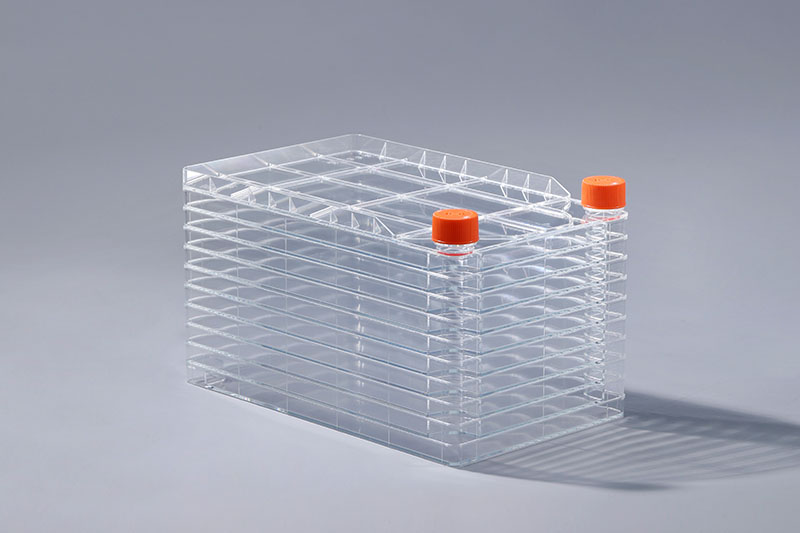Mycoplasma contamination is a frequently encountered problem in basic research and industrial production. When using cell factories for cell culture or large-scale industrial production, mycoplasma contamination is also very troublesome. So, what to do in this situation?
Mycoplasma is a microorganism whose size is between bacteria and virus (minimum diameter 0.2um) and lives independently. After mycoplasma contaminates cells, the culture medium may not become cloudy. It is relieved by passage and medium exchange, so it is easy to be ignored. But some serious cases can cause slow cell proliferation and even fall off from the cell factory.
If mycoplasma contamination occurs, for non-important cells, such as cells in culture, cells of WCB, etc., the culture and the used medium can be inactivated and discarded. For more important cells, MRA treatment, drug-assisted warming treatment, use of mycoplasma-specific serum, inoculation and sterilization in animals, macrophage phagocytosis, and use of mycoplasma-clearing medium can be used for treatment.
The prevention of mycoplasma contamination is the key in the use of cell factories for cell culture work. The probability of mycoplasma contamination can be reduced by controlling environmental pollution, strict experimental operation, ensuring sterility of cell culture medium and equipment, and adding appropriate amount of antibiotics to cell culture medium.
The FAI climbed 5.9 percent year-on-year in the first 11 months of 2018, quickening from the 5.7-percent growth in Jan-Oct, the National Bureau of Statistics (NBS) said Friday in an online statement.
The key indicator of investment, dubbed a major growth driver, hit the bottom in August and has since started to rebound steadily.
In the face of emerging economic challenges home and abroad, China has stepped up efforts to stabilize investment, in particular rolling out measures to motivate private investors and channel funds into infrastructure.
Friday's data showed private investment, accounting for more than 60 percent of the total FAI, expanded by a brisk 8.7 percent.
NBS spokesperson Mao Shengyong said funds into weak economic links registered rapid increases as investment in environmental protection and agriculture jumped 42 percent and 12.5 percent respectively, much faster than the average.
In breakdown, investment in high-tech and equipment manufacturing remained vigorous with 16.1-percent and 11.6-percent increases respectively in the first 11 months. Infrastructure investment gained 3.7 percent, staying flat. Investment in property development rose 9.7 percent, also unchanged.
 English
English



















































